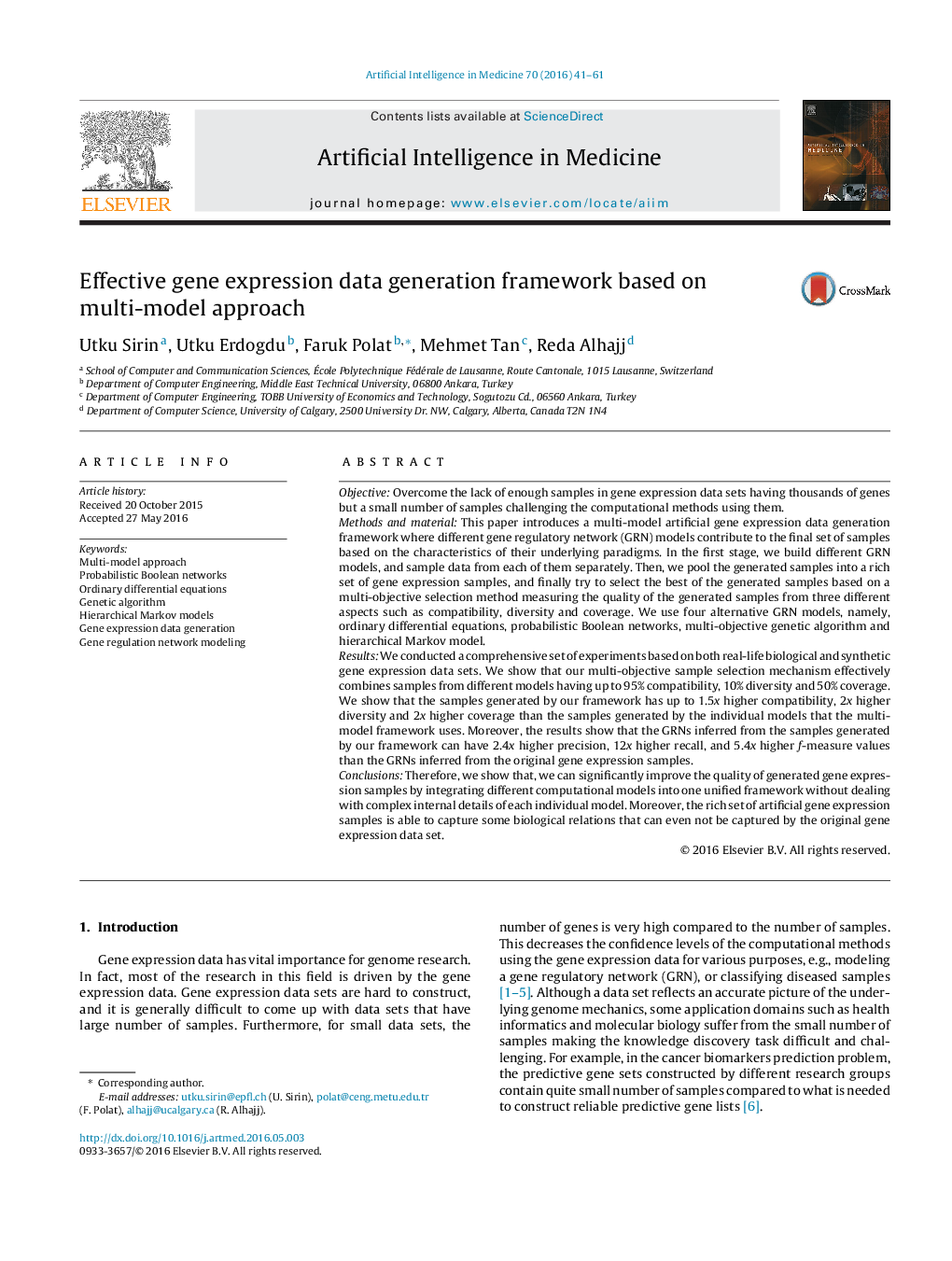| Article ID | Journal | Published Year | Pages | File Type |
|---|---|---|---|---|
| 377542 | Artificial Intelligence in Medicine | 2016 | 21 Pages |
ObjectiveOvercome the lack of enough samples in gene expression data sets having thousands of genes but a small number of samples challenging the computational methods using them.Methods and materialThis paper introduces a multi-model artificial gene expression data generation framework where different gene regulatory network (GRN) models contribute to the final set of samples based on the characteristics of their underlying paradigms. In the first stage, we build different GRN models, and sample data from each of them separately. Then, we pool the generated samples into a rich set of gene expression samples, and finally try to select the best of the generated samples based on a multi-objective selection method measuring the quality of the generated samples from three different aspects such as compatibility, diversity and coverage. We use four alternative GRN models, namely, ordinary differential equations, probabilistic Boolean networks, multi-objective genetic algorithm and hierarchical Markov model.ResultsWe conducted a comprehensive set of experiments based on both real-life biological and synthetic gene expression data sets. We show that our multi-objective sample selection mechanism effectively combines samples from different models having up to 95% compatibility, 10% diversity and 50% coverage. We show that the samples generated by our framework has up to 1.5x higher compatibility, 2x higher diversity and 2x higher coverage than the samples generated by the individual models that the multi-model framework uses. Moreover, the results show that the GRNs inferred from the samples generated by our framework can have 2.4x higher precision, 12x higher recall, and 5.4x higher f-measure values than the GRNs inferred from the original gene expression samples.ConclusionsTherefore, we show that, we can significantly improve the quality of generated gene expression samples by integrating different computational models into one unified framework without dealing with complex internal details of each individual model. Moreover, the rich set of artificial gene expression samples is able to capture some biological relations that can even not be captured by the original gene expression data set.
